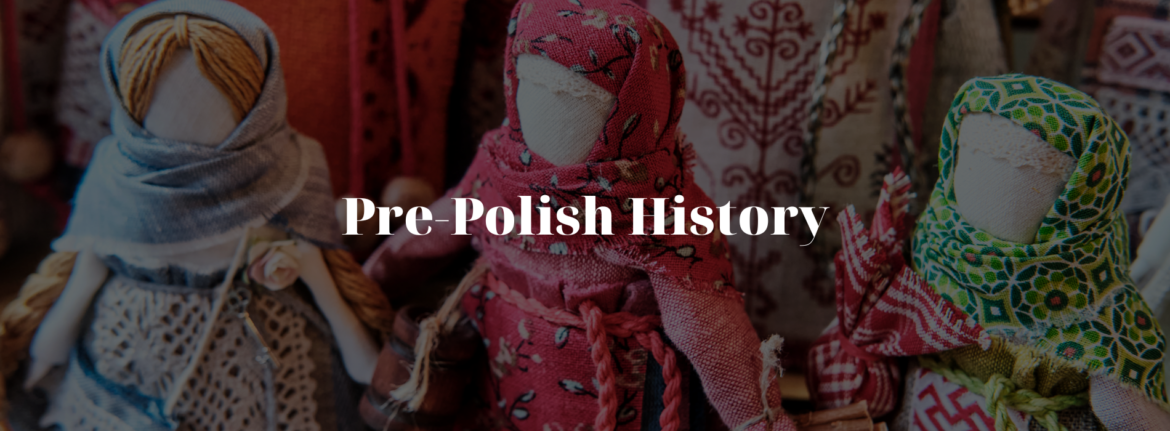Before the establishment of Poland as a nation, the lands that would become Polish territory were home to vibrant Slavic tribes with a rich tapestry of traditions, beliefs, and social structures. These early communities laid the cultural groundwork that still influences Polish society today. From unique spiritual practices and festivals to agrarian lifestyles and communal gatherings, the heritage of ancient Slavs on Polish land provides insight into the lives and beliefs of these early inhabitants.
The Origins of the Slavs on Polish Lands
The origins of the Slavs, including those who settled in the area that would become Poland, are not entirely clear, with theories ranging from the Carpathian Mountains to the vast plains of Eastern Europe. By the early medieval period, Slavic tribes had established themselves across what is now Poland, forming villages and communities that would serve as the foundation for later states.
These early Slavic tribes shared linguistic, cultural, and spiritual ties, allowing them to maintain a cohesive identity across various regions. Living primarily off farming and animal husbandry, they developed strong connections to nature, which shaped their worldview and religious practices.
Slavic Beliefs and Spirituality
Central to early Slavic culture was its unique polytheistic belief system, heavily rooted in nature worship. The Slavs believed that spirits, or “dusze”, inhabited natural elements like forests, rivers, and mountains, which were seen as powerful forces. This animistic belief influenced their practices, leading them to honor specific trees, rocks, or bodies of water considered sacred.
Among the pantheon of Slavic gods, several were particularly important to the tribes living on Polish land:
- Perun, the god of thunder and war, was one of the chief deities, often depicted as a powerful, stern figure.
- Mokosh, the goddess of fertility and the earth, symbolized growth, harvest, and the nurturing power of nature, reflecting the agrarian focus of Slavic life.
- Weles, a god associated with cattle, wealth, and the underworld, represented the duality of life and death, reflecting the natural cycles that early Slavs observed and respected.
While formal temples were rare, the Slavs constructed simple shrines and altars in nature, particularly in groves or by bodies of water. Seasonal festivals and rituals celebrated the changing of the seasons, marking agricultural cycles and paying tribute to deities for protection, successful harvests, and good fortune.
Slavic Festivals and Rites
Festivals and rites were key to Slavic communal life, bringing communities together to celebrate both religious and social bonds. These celebrations included singing, dancing, and the sharing of food and drink, often around a ceremonial fire—a symbol of purity and the gods’ presence. Many of these traditions echo in Polish culture today, particularly through holidays like Kupala Night and Dziady.
- Kupala Night: This midsummer festival celebrated life, love, and fertility. Taking place around the summer solstice, Kupala Night included young people jumping over bonfires, a ritual meant to ensure good health and fortune. Another key element was the practice of young women releasing flower wreaths into the water, which young men would then attempt to retrieve as a symbol of courtship.
- Dziady: An ancient rite of ancestor worship, Dziady was a time for connecting with the spirits of departed family members. During this ritual, the Slavs would hold feasts to honor the dead, inviting the spirits to join them for food and drink. They believed that honoring their ancestors in this way would bring blessings to the family and community.
These ancient festivals exemplify the ways in which the Slavs harmonized with the natural world and honored the cycles of life, death, and rebirth. Some of these customs evolved and merged with Christian traditions following the region’s Christianization in 966 AD, blending pagan and Christian practices that are still observed in some form in Polish culture.
Slavic Social Structure and Community Life
Slavic communities were organized around small villages where extended families lived together, working and supporting one another. These communities emphasized collective wellbeing, with decisions made by councils of elders or tribal leaders who represented the interests of the group. The family unit was central, with kinship bonds extending into the wider community, fostering close ties and cooperation.
Village life revolved around agricultural cycles, with most Slavs relying on farming, animal husbandry, and crafting. Communal gatherings often included music, dance, and storytelling, strengthening social bonds. This lifestyle promoted a sense of unity and mutual dependence, with members of the community sharing responsibilities and resources. The values of unity and shared responsibility in Slavic culture would eventually become foundational to Polish society.
Legacy of Slavic Traditions in Polish Culture
The influence of ancient Slavic traditions is still evident in Poland’s cultural practices, from folklore and festivals to regional superstitions. Festivals like Dożynki, the annual harvest celebration, carry echoes of Slavic fertility rites, while certain folk songs, dances, and craft traditions have deep roots in early Slavic culture.
Moreover, many Polish folk beliefs and superstitions trace back to the Slavs’ reverence for nature. Practices such as respecting elder trees, leaving offerings in forests, or avoiding certain rivers at night are remnants of an ancient worldview that saw nature as alive and powerful. Today, the memory of these early beliefs persists, a testament to the resilience and richness of Slavic culture on Polish soil.
Poland’s Slavic heritage remains an essential part of its cultural identity, shaping the traditions, values, and beliefs that still resonate throughout the country. As modern Poland embraces its past, the customs and stories of the ancient Slavs continue to offer a glimpse into the lives of those who once roamed the land, preserving a vibrant legacy for future generations.
